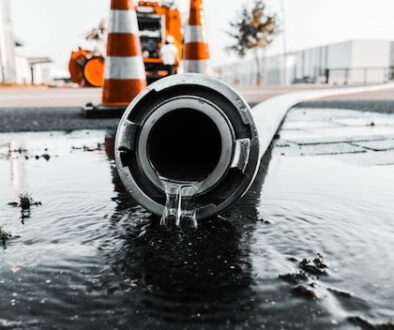Environmental Benefits of Efficient Wastewater Lift Stations: Minimizing Pollution and Protecting Water Sources
Clean water is a cornerstone of a healthy community. In the United States, a vast network of wastewater collection systems plays a vital role in protecting our water sources and public health. These systems rely on strategically placed wastewater lift stations to effectively transport wastewater to treatment plants, even when gravity isn’t enough. While their function might seem simple, efficient wastewater lift stations offer significant environmental benefits that contribute to cleaner waterways and a healthier environment.
The Role of Wastewater Lift Stations
Wastewater lift stations are essential components of wastewater collection systems in areas with low-lying topography or where wastewater needs to be elevated for proper flow to treatment plants. These stations typically consist of a wet well that collects wastewater and a pump system that lifts it to the desired level for onward transportation.
Traditionally, wastewater lift stations were designed with a focus on functionality. However, advancements in technology and a growing awareness of environmental responsibility have led to the development of more efficient wastewater lift stations. These next-generation stations offer several advantages over older models, including:
- Reduced Energy Consumption: Modern lift stations utilize energy-efficient pumps and control systems that minimize power usage. This translates to lower operational costs and a smaller environmental footprint. Studies by the Water Environment Research Foundation (WERF) indicate that optimizing wastewater lift stations can significantly reduce energy consumption, leading to lower greenhouse gas emissions.
- Improved Reliability: Advanced monitoring and control systems allow for real-time monitoring of station performance, enabling predictive maintenance and reducing the risk of equipment failures. This translates to fewer overflows and spills, safeguarding public health and the environment.
- Enhanced Odor Control: Modern lift stations often incorporate odor control technologies, such as ventilation systems and biofilters, to minimize unpleasant odors that can sometimes be associated with wastewater treatment facilities.
These advancements in wastewater lift station technology contribute directly to environmental protection in several ways.
Minimizing Pollution Risks
Wastewater lift stations play a critical role in preventing untreated wastewater from entering our waterways. When a lift station malfunctions, overflows can occur, releasing raw sewage into the environment. This can contaminate rivers, lakes, and streams, posing a serious threat to public health and aquatic ecosystems.
Efficient wastewater lift stations help mitigate this risk by:
- Reducing the likelihood of overflows: Reliable equipment and preventative maintenance minimize the chance of pump failures that could lead to overflows.
- Minimizing the impact of overflows: In the unfortunate event of an overflow, efficient systems can often detect and respond quickly, limiting the amount of untreated wastewater released into the environment.
By minimizing the risk and impact of overflows, efficient wastewater lift stations play a crucial role in safeguarding our water resources and protecting public health.
Conserving and Protecting Water Sources
Clean water is a finite resource, and wastewater treatment plays a vital role in ensuring its availability. Efficient wastewater lift stations contribute to water conservation by:
- Optimizing water usage: Energy-efficient pumps minimize electricity consumption, a vital resource used in wastewater treatment processes.
- Protecting source water: By preventing overflows, efficient lift stations help safeguard our rivers, lakes, and aquifers from contamination, ensuring a reliable source of clean water for future generations.
In a country as vast and diverse as the United States, the specific needs of wastewater lift stations will vary depending on factors like location, topography, and local regulations. However, prioritizing efficiency remains a key factor across the board.
Choosing the Right Wastewater Lift Station in Houston
For residents and municipalities in Houston, Texas, selecting the right wastewater lift station is crucial for environmental protection and public health. Here are some key considerations when choosing a lift station for your needs:
- Compliance with Regulations: Ensure the lift station meets all relevant local and state environmental regulations.
- System Capacity: The lift station’s capacity should be sufficient to handle the anticipated wastewater flow for your area.
- Energy Efficiency: Look for a lift station equipped with energy-efficient pumps and control systems.
- Reliability: Choose a system with a proven track record of reliability and a robust preventative maintenance plan.
- Odor Control: Consider the importance of odor control, especially if the lift station will be located in a residential area.
Consulting with qualified wastewater engineering professionals in the Houston area is highly recommended. They can assess your specific needs and recommend a solution that is not only effective but also environmentally responsible.
By prioritizing efficiency and partnering with qualified professionals, communities across the United States, including Houston, can ensure they have the wastewater lift stations they need to protect their water sources, safeguard public health, and contribute to a cleaner environment for all.
Sources:



